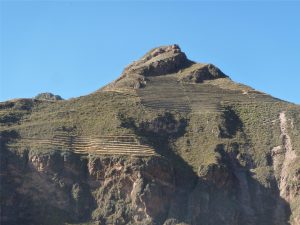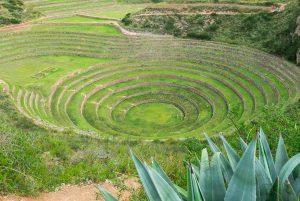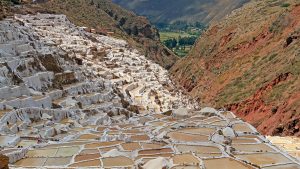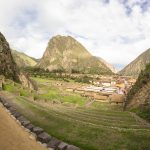Ollantaytambo, a unique place where history permeates every stone. Known as the Living Inca City, this destination combines archaeology, tradition, legends, and natural beauty that captivates every traveler who walks its cobblestone streets.
Visiting Ollantaytambo isn’t just about exploring ruins or temples; it’s about walking through a space where time seems to stand still and, at the same time, continues to flow hand in hand with its Quechua inhabitants.

A Town That Never Stopped Living
Unlike many other archaeological sites, Ollantaytambo is not an abandoned town, but a city that has been inhabited since Inca times.
Its narrow cobblestone streets, houses built on original walls, and water channels that still flow through the paths show how Inca engineering continues to function more than 500 years later. Walking here is like immersing yourself in a world where markets, artisans, and children playing coexist in harmony with ancestral heritage.
This detail makes it a unique experience: you’re not just visiting an archaeological complex, but a living village that preserves the wisdom of its ancestors in every corner.


The Fortress and Ceremonial Center
The archaeological complex of Ollantaytambo is known as the Fortress, although it was actually a religious, agricultural, and military center.
-The Terraces: Monumental terraces that rise into the mountain and served both for farming and to protect the city. Climbing them is a physical challenge, but the panoramic view of the valley is worth it.
-The Temple of the Sun: One of the most impressive sites, although unfinished. There lie enormous blocks of pinkish stone brought from a quarry several kilometers away. Even today, archaeologists wonder how the Incas managed to move such colossi across such difficult terrain.
-The colcas or deposits: Strategic constructions on the mountainside, where foodstuffs such as corn, quinoa, and potatoes were stored. Thanks to the natural ventilation of the site, these deposits functioned as natural refrigerators.
-The ceremonial sector: Where the Incas performed rituals and offerings in honor of the sun, water, and the protective mountains.
Ollantaytambo also has a place in history as the scene of one of the few Inca victories against the Spanish. In 1537, Manco Inca managed to temporarily defeat Hernando Pizarro’s troops, flooding the valley with water and using the fortress as a defensive bastion.
Legend of Ollantay and Cusi Qoyllur
Ollantaytambo is also the setting for one of the most beautiful legends of the Andean world: the story of Ollantay and Princess Cusi Qoyllur.
According to tradition, General Ollantay fell in love with the daughter of the Inca Pachacútec. However, since he was not a member of the royal nobility, their love was forbidden. Desperate, Ollantay rebelled against the Inca and made this fortress his refuge.
The war lasted for years, but he was finally captured. When he seemed doomed to die, the new Inca, Túpac Yupanqui, pardoned him, allowing him to unite with his beloved. This story was transformed into one of Peru’s oldest plays and is still performed at local festivals.

Inca Urban Design
The town retains much of its original urban layout. Its rectangular streets, central courtyards, and water channels reflect the Inca’s advanced planning.
One of the most notable areas is the Qosqo Ayllu neighborhood, where you can still see what Inca buildings looked like in everyday use. Walking through it reveals that Ollantaytambo is not just history: it is a living example of ancient urban planning that continues to function perfectly.



Ollantaytambo as the Gateway to Machu Picchu
Today, Ollantaytambo is also known as the gateway to Machu Picchu, as trains to Aguas Calientes depart from its station.
Many travelers visit in passing, but staying overnight reveals another side of the place: quiet streets at dusk, small cafes, cozy lodgings, and the magical feeling of being in a town frozen in time.
Furthermore, spectacular hikes such as the Classic Inca Trail and alternative routes that connect with high Andean communities depart from here.
Tips for your visit to Ollantaytambo:
📍 Location
Urubamba Province, Cusco.
1 hour and 30 minutes by public transport from Cusco.
🎟️ Entrance
Admission to the archaeological site is included in the Cusco Tourist Ticket.
🕒 Recommended Time
-A minimum of half a day to explore the fortress.
-One night if you want to explore the town at a leisurely pace and take the train to Machu Picchu.
🚍 How to Get There
-Public transport from Cusco (buses from Av. Grau).
-Tours to the Sacred Valley.
-Train to Machu Picchu (PeruRail and IncaRail)
🌞 Useful Tips
-Wear comfortable shoes: the terraces require good footwear.
-Protect your skin: sunscreen, a hat, and sunglasses.
-Acclimatize your body: Ollantaytambo is at almost 3,000 meters above sea level.
-Take the opportunity to try typical dishes such as Andean trout, chicha de jora, or roasted guinea pig.
-If you like photography, visit at sunrise or sunset: the light is magical on the mountains and terraces.
Ollantaytambo: History, Myth, and Andean Life
Visiting Ollantaytambo is much more than just a stop on the way to Machu Picchu. It is a journey to the heart of the Andean world, a place where Inca grandeur, love legends, living traditions, and majestic landscapes come together in a single space. Every wall tells a story of resistance, every street conveys centuries of life, and every local perspective connects the traveler with a culture that continues to flourish in the Andes. In Ollantaytambo, the past isn’t buried: it continues to breathe. And that makes it one of the most special corners of Cusco and Peru.








Leave A Reply